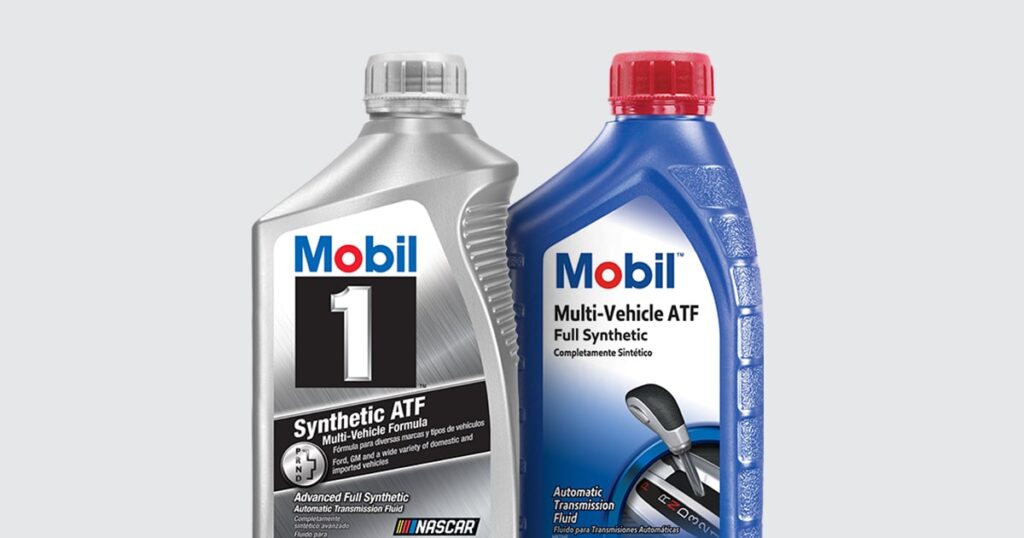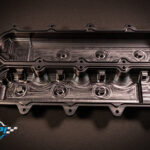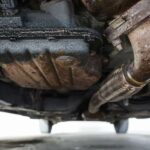
Toyota Corolla Gearbox Oil Leak: Causes, Fixes & Prevention

Introduction
If you’ve ever spotted a suspicious puddle under your car, there’s a good chance it’s not just rainwater. For many drivers of Toyota Corolla, a gearbox oil leak can sneak up out of nowhere. It starts small, but if ignored, it can lead to serious transmission damage. The good news? If you know what to look for, you can catch the problem early and save yourself a hefty repair bill.
In this guide, we’ll break down everything you need to know—from spotting the first signs of a leak to fixing it like a pro and keeping it from happening again.
Understanding the Gearbox System
What the Gearbox Does
Think of the gearbox as the translator between your engine and your wheels. It takes the engine’s power and converts it into controlled movement, letting you accelerate smoothly and maintain speed. Without proper gearbox oil, that translation becomes… well, a messy, grinding disaster.
Manual vs. Automatic Gearbox
Manual and automatic gearboxes both rely on oil but in slightly different ways. Manuals use gear oil to lubricate moving parts, while automatics use transmission fluid to lubricate and cool. Either way, a leak means trouble—less lubrication equals more wear and tear.
Common Signs of a Gearbox Oil Leak
Visible Oil Puddles Under Your Car
The most obvious clue is a reddish or brownish puddle beneath your Corolla. Gearbox oil typically has a thick consistency and a strong, distinct smell. If it’s leaking, you’ll likely spot it near the front-middle area of your vehicle.
Grinding or Whining Noises
When gearbox oil levels drop, metal parts rub together with little lubrication. The result? A chorus of whining, clunking, or grinding that can make any driver cringe.
Trouble Shifting Gears
Low oil levels make shifting less smooth. You might feel resistance, delay, or hear a clunk when changing gears—especially in manual models.
Major Causes of Gearbox Oil Leaks
Worn Seals and Gaskets
Over time, seals and gaskets harden and crack, especially in older cars. When that happens, oil finds its way out through tiny gaps.
Damaged Output Shaft Seal
This is one of the most common culprits. The output shaft seal sits where the driveshaft connects to the transmission. A bad seal here can drip oil continuously.
Faulty Transmission Pan
For automatic transmissions, the transmission pan can corrode or get damaged by road debris. Even a small dent can lead to a persistent leak.
Overfilled Gearbox Oil
Ironically, too much oil can cause leaks. Excess pressure forces the fluid out through seals and vents, creating a mess.
Corrosion or Physical Damage
Rust, debris, or an accidental hit underneath the vehicle can damage the gearbox housing or pan. Cracks—even tiny ones—are enough to start a leak.
You may be interested in reading 2004 Toyota Corolla Oil Leak: Causes, Fixes & Prevention
2004 Toyota Corolla Oil Leak: Causes, Fixes & PreventionDiagnosing the Source of the Leak
Checking Under the Vehicle
Start simple: park on a clean surface and check where the oil drips are forming. A flashlight will help you spot the wettest areas.
Inspecting the Transmission Pan
If the pan’s bolts are loose or its gasket is cracked, this is likely your problem area. Tightening or replacing may solve it quickly.
Using UV Dye to Detect Leaks
Add UV dye to the gearbox oil, drive for a short distance, then use a UV light to trace the leak’s exact location. It’s like a detective trick for your car.
Step-by-Step Guide to Fixing a Gearbox Oil Leak
1. Gather Your Tools and Materials
You’ll need a jack, jack stands, a drain pan, wrenches, replacement seals or gaskets, new gearbox oil, and possibly a torque wrench. Gloves and safety glasses are a must.
2. Locate the Leak
Before draining anything, find the exact source. You don’t want to replace the wrong part and still have a leak.
3. Drain the Gearbox Oil
Place the drain pan under the gearbox and remove the drain plug. Let the oil flow out completely, then reinstall the plug temporarily to keep dirt out.
4. Replace or Repair Damaged Parts
If it’s a seal, carefully remove the old one with a seal puller and press in a new one evenly. If it’s a gasket, clean the surface thoroughly before fitting a new gasket.
5. Refill with Fresh Gearbox Oil
Use the manufacturer-recommended oil type. Overfilling is just as bad as underfilling, so double-check the level.
6. Test Drive and Recheck
After reassembling, take a short drive. Then park and check for any new drips. A dry surface means mission accomplished.
When to Seek Professional Help
Signs the Leak Is Beyond DIY
If the gearbox casing itself is cracked, or the leak is coming from deep within the transmission, DIY may not cut it. These jobs require special tools and expertise.
Cost Estimates for Repairs
A simple seal replacement can cost under $200, but if the transmission needs rebuilding, you might be looking at $1,000 or more. Catching leaks early saves money.
Preventing Future Gearbox Oil Leaks
Routine Maintenance Tips
Regularly check oil levels and the area under your car. The sooner you spot a small drip, the easier the fix.
You may be interested in reading 2004 Toyota Corolla Oil Leak: Causes, Fixes & Prevention
2004 Toyota Corolla Oil Leak: Causes, Fixes & Prevention 2011 Toyota Corolla Oil Leak Problem: Causes, Fixes & Prevention Tips
2011 Toyota Corolla Oil Leak Problem: Causes, Fixes & Prevention TipsRegular Seal and Gasket Checks
Seals and gaskets don’t last forever. Replace them before they fail, especially if your car is over 10 years old.
Avoiding Overfilling the Gearbox
Stick to the recommended fluid levels. Overfilling increases pressure and makes leaks more likely.
Choosing the Right Gearbox Oil
OEM vs. Aftermarket Options
OEM (original equipment manufacturer) oil is designed specifically for your Corolla, but quality aftermarket options can work too—just make sure they meet the right specs.
Viscosity and Compatibility
Always use the recommended viscosity grade. The wrong oil can reduce lubrication efficiency and increase wear.
How Gearbox Oil Leaks Affect Vehicle Performance
Impact on Transmission Efficiency
Low oil means higher friction. This can make shifting rough, reduce acceleration smoothness, and hurt fuel economy.
Potential Long-Term Damage
Ignoring a leak can lead to overheating and internal gearbox damage. Eventually, your car may not move at all.
Final Thoughts
A gearbox oil leak might look like a small problem, but it’s one that can snowball into serious trouble fast. The good news? With the right knowledge—and a bit of vigilance—you can fix small leaks yourself and keep your Toyota Corolla running like a champ.
Whether you roll up your sleeves for a DIY fix or hand it off to a trusted mechanic, the key is acting early. Don’t ignore that drip!
FAQs
1. Can I drive my Toyota Corolla with a gearbox oil leak?
You can, but it’s not recommended. Even a small leak can lead to major damage if ignored.
2. How often should I check gearbox oil levels?
It’s smart to check every 5,000–10,000 miles or during routine service intervals.
3. What color is gearbox oil?
Typically reddish or brown. If it’s milky, it may be contaminated with coolant or water.
4. How long does it take to fix a gearbox oil leak?
Simple seal or gasket replacements can take 1–3 hours. Major repairs can take much longer.
 2004 Toyota Corolla Oil Leak: Causes, Fixes & Prevention
2004 Toyota Corolla Oil Leak: Causes, Fixes & Prevention 2011 Toyota Corolla Oil Leak Problem: Causes, Fixes & Prevention Tips
2011 Toyota Corolla Oil Leak Problem: Causes, Fixes & Prevention Tips 2014 Toyota Corolla Oil Leak — Complete Guide
2014 Toyota Corolla Oil Leak — Complete Guide5. Will a gearbox oil leak fail an inspection?
Yes, in many regions, active fluid leaks can cause inspection failure. It’s best to fix it promptly.
If you want to know other articles similar to Toyota Corolla Gearbox Oil Leak: Causes, Fixes & Prevention you can visit the category Common Problems.
Deja una respuesta






More content of your interest